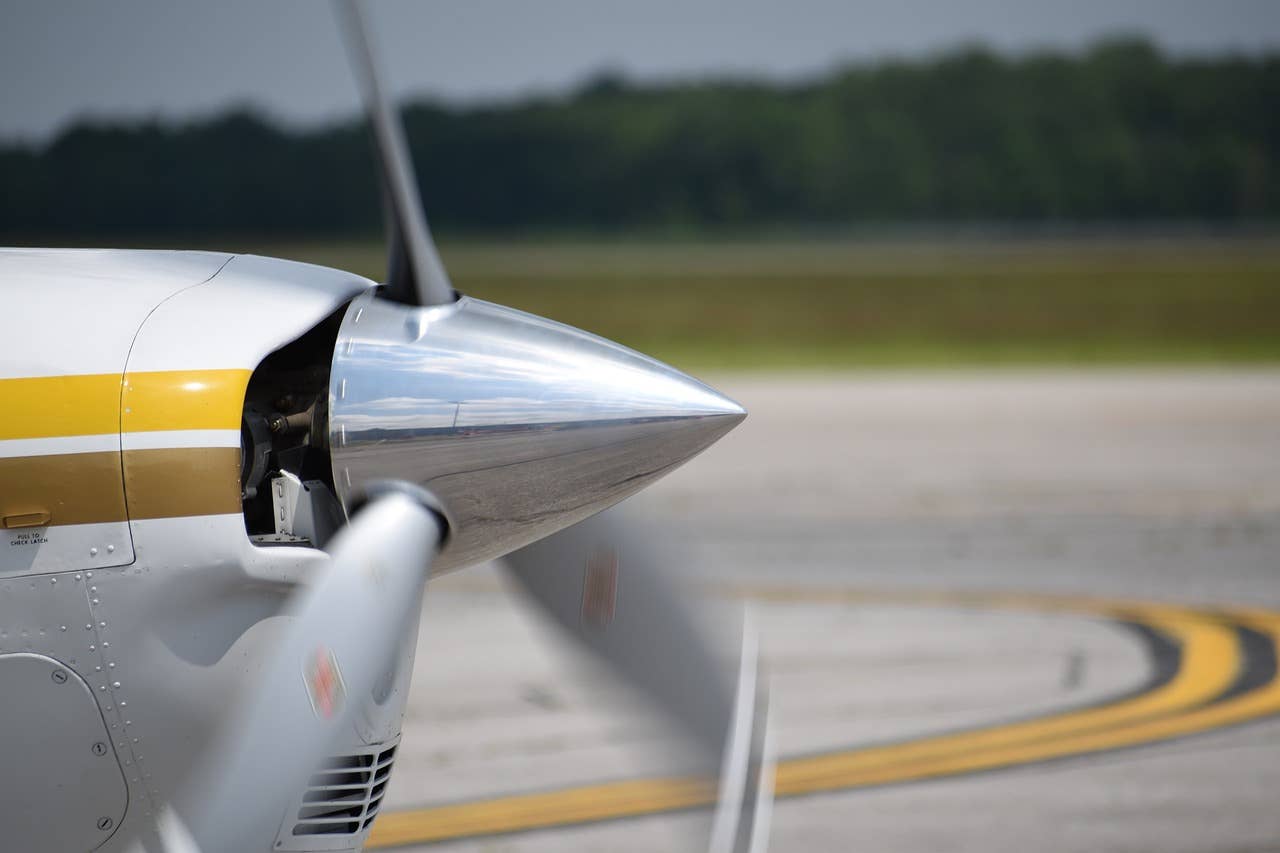Always Remember to Taxi with Care
There’s no shortcut that is worth risking a dinged propeller or any other airplane damage.

There’s a lot to pay attention to when you are taxiing to and from parking. [Photo: OlinEJ/Pixabay]
Lesson two was about to begin for the private pilot candidate. Before I climbed into the airplane I spied something on the taxiway that shouldn't be there. It was a bolt about half as big as a smartphone. I picked it up and the learner remarked it was a good thing we didn't taxi over it. I agreed and noted foreign object debris (FOD) isn't the only thing to worry about when you are taxiing from parking.
Watch Those Wings
"Move like a minesweeper in troubled waters," my instructor said as we pulled out of the aircraft parking area. Protocol at the school meant pulling the aircraft out of its parking stall with the towbar and positioning it perpendicular to the stall and making sure the tail wasn't pointed at another aircraft before engine start.
It was a confined area, so you had to move slowly, with your head looking left and right as you took care to keep the nosewheel of the Cessna 172 on the gold line. On sunny days you learned that, as long as the shadows didn't touch, the wingtips wouldn't hit properly parked aircraft.
Slower Is Better
One of the first lessons a fledgling pilot learns is how to taxi their aircraft. This is more than learning to steer using the rudder pedals and controlling the speed with the throttle and not riding the brakes.
Your instructor will caution you to taxi no faster than a brisk walk and not to jam on the brakes. Instead, use energy management. Taxi as if you don't have brakes and always be thinking of what you will do and where you will go if the brakes fail during taxi.
This is one of the reasons you test the brakes before you head to the runway. FLYING contributor Jason Blair advocates the one-at-a-time method for brake check, followed by both. I was a low-time CFI when I learned this technique, and it came in quite handy when the left brake proved to be very spongy and just this side of worthless. I was glad we discovered this before we tried to stop in the run-up area that was just on top of a berm. Had we gone down the berm, it would have been Mr. Toad's Wild Ride.
- READ MORE: Paper Chase: Beware of Prop Wash
Follow the Gold Line if You Have One
How wide is the wingspan of the aircraft you fly? How wide is the taxiway? These are metrics you need to know, especially if you intend to have a career in aviation and fly the so-called “big iron.” If the airport information page includes a warning about taxiways off-limits to aircraft with wingspan beyond a certain size, respect it.
Bad things happen when a pilot taxis too close to another vehicle. In 2010 a fueler at King County International Airport/Boeing Field (KBFI) in Seattle had to duck to avoid being decapitated when the wingtip of a business jet came through the windshield of his truck.
Maintain Centerline
In a nosewheel-equipped airplane it is fairly easy to hold the centerline. Line it up with your right leg or a line of rivets on the cowling. In a tailwheel-equipped aircraft you will need to serpentine to keep an eye on the taxiway. Don't go too far one way or the other, and remember if you go too fast, taxiing a tailwheel aircraft can be like pushing a shopping cart backward when you are wearing heels for the first time. (Gentlemen, ask your wives and girlfriends—it is a rite of passage for us.)
Be particularly careful when taxiing up to the fuel pumps. I'm a big fan of shutting down and walking the airplane the last 10 feet or so, carefully positioning it with the towbar. Get a wing walker if needed. Most pilots are happy to help, and you will probably make a friend in the process.
Don't Go Rogue
Bad things happen when pilots don't stay in their lanes. I mean that literally. I watched a Piper Seneca that was being led to parking by a designated airshow volunteer on a scooter decide to take a short cut. Rather than following the scooter, the Piper pilot turned to the right, cutting across the grass, which was rather long and hid a small ditch. When the nosewheel went into the ditch, both propellers hit the ground as well. You can guess the rest.
Ditches aren't the only hazards. I've become wary of other aircraft taxiing after an experience involving a Mooney pilot who took a shortcut across the parking ramp. It was Sunday morning and the flight school ramp was very empty as most of the fleet was already up.
There was a Mooney at the fuel pump. The pilot started the engine and revved it, spinning the aircraft as if to head to the north transient parking area. I thought he was going to head there by way of the taxi lane, but instead the pilot proceeded to head straight north over the empty tie-down positions. I should say they were empty except for tie-down straps, metal hooks, and wooden chocks.
I had just stepped on to the ramp when there was a loud ping, and a metal hook attached to 6 inches of green tie-down strap bounced along the ramp, catching me in the left shin. It was more startling than painful, but it still made me yell, which brought Boss running. "The Mooney ran over one of our tie-downs!" I said, picking up the hook still attached to the severed strap.
Boss put on his Dad face and went to "talk" to the Mooney pilot. The strap that he had run over now looked like a mare's tail, there was paint missing from the propeller, and the edges were rough. It also had strands of strap embedded in it. The damage was probably expensive and definitely could have been a lot worse—all just to save a few seconds with a shortcut across parking spots.
I saved that chunk of strap with the hook, and I show it to all my learners when we discuss ramp safety. I teach them to curl up the tied-down straps and put the wooden chocks on top of them positioned so the pilot knows how far back to park the airplane in its stall. Although it takes a few minutes, I'd rather take the time than risk potential damage by leaving tie-downs and chocks in the open for the unaware and or unobservant to run over.

Subscribe to Our Newsletter
Get the latest FLYING stories delivered directly to your inbox






